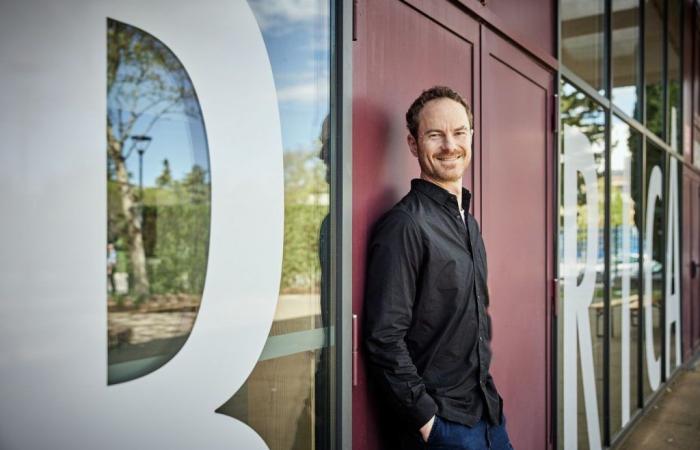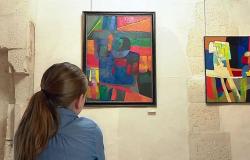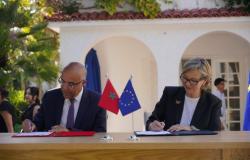The cross : What does your status as an “accomplice artist” of the Avignon Festival consist of?
Boris Charmatz : In 2022, while Tiago Rodrigues was taking over the direction of the Avignon Festival, I was myself appointed artistic director of the Tanztheater in Wuppertal, Germany, the legendary company of the choreographer Pina Bausch. We were both Europeans responsible for piloting glorious institutions in a country other than our own. This similarity of trajectory created a complicity of vision between us.
Avignon, like Wuppertal, has a magnificent history, and it would be impudent and imprudent to want to make any taste buds. As with a building, you should not knock down the foundations but make it live, knowing full well that the work is never finished.
How do you include your shows in this desire to look to the future while remembering history?
B. C. : I believe that the three times that I propose this year represent the way in which I want to honor the past, the present and the future of creation. Thus Forever is a new immersion with the artists of Wuppertal – some of whom did not know Pina Bausch – in Café Müllerone of his legendary pieces; Liberty Cathedral is the first choreography I signed for the German company; Circles (read below) is an initiative that I think has a promising future, like laboratory research, but in the open air.
A close relationship to ritual unites these three pieces and “explodes” in Liberty Cathedral…
B. C. : That’s true. I come from a communist and atheist family, but my parents introduced me to the mystical films of Pasolini and Bergman, to the great sacred works emanating from believing and non-believing artists. Spiritual questions arise for each of us, even if we do not provide the same answers.
Create Liberty Cathedral (2023) in the vast volumes of the church of Neviges, in the Rhineland, was a unique experience, an access to an unforgettable form of physical and psychic monumentality. And, of course, it made me think about what a church represents. A place of buried speech (like pedophile crimes) or of open speech? A place of welcome or exclusion? A place of collected solitude or of collective fervor? All of this at the same time, of course.
When we think of dance, we think of performance, health and the youthfulness of the body. How can we welcome fragility?
B. C. : This is an essential question that has been on my mind, especially since I had the chance to work with Raimund Hoghe, the playwright of Pina Bausch, whose damaged body seemed so ill-suited to dance. And yet, as soon as he started moving, he was the greatest in the world…
Some artists like Martha Graham or Merce Cunningham have danced when they were older, but in general, these “extensions” are reserved for stars, much less for lesser-known names. It’s a bit like the tree hiding the forest…
However, I believe in dance as a viaticum against old age and I am happy that in Wuppertal, people only retire at 67 and that, even after that, dancers can come back to participate in certain projects and, of course, pass on their knowledge to the younger ones. Such as Nazareth Panadero, who collaborated so much with Pina Bausch and who will be in Avignon for Forever.
With Circles Also, all ages are present on the lawn of Bagatelle. Several participants thanked me for the gift I gave them. But I answered them without false modesty that I received this gift as much as I gave it. The gift, in reality, is what happens between these bodies in movement, whoever they are, professionals or neophytes. It is the magic of dance, that of Art with a capital “A”.
——
Circlesintergenerational round
A large circle is drawn on the lawn of the Bagatelle stadium. On this Sunday afternoon, Boris Charmatz orchestrates the second of three sessions of his “open-air choreographic workshop” bringing together professional dancers, students and amateurs.
Nearly 200 people invited to freely evoke the circular symbolism that runs through the history of dance, from children’s rounds to pirouettes on pointe and even contemporary variations. Each begins alone with slow, sometimes cautious movements. Like a prelude to the formation of duos and then a collective – from 16 to 74 years old – increasingly loose, united, energetic. To the point that some spectators would happily see themselves joining them, like Marine: «It’s very moving to see an older lady and a younger one finding their feet together, without the latter being the “crutch” of the former.”
——
A European choreographer
1973. Born in Chambéry.
1986-1989. Studied at the Paris Opera Ballet School and the National Conservatory of Lyon.
1992. Creation, with Dimitri Chamblas, of the Edna association, with a multidisciplinary vocation.
1993. Creation of Head on.
2002. Creating the installation Theatre-television.
2006. Creation of Old (critics’ grand prize) in collaboration with Raimund Hoghe, playwright of Pina Bausch.
2009. Director of the National Choreographic Center of Brittany.
2011. Associate artist of the Avignon Festival, the first within the theatrical event.
2015. Creation of If Tate Modern Was a Dance Museum for the Tate Modern in London.
2022. Start of an eight-year term at the helm of the Tanztheater Wuppertal, the company founded by Pina Bausch.






